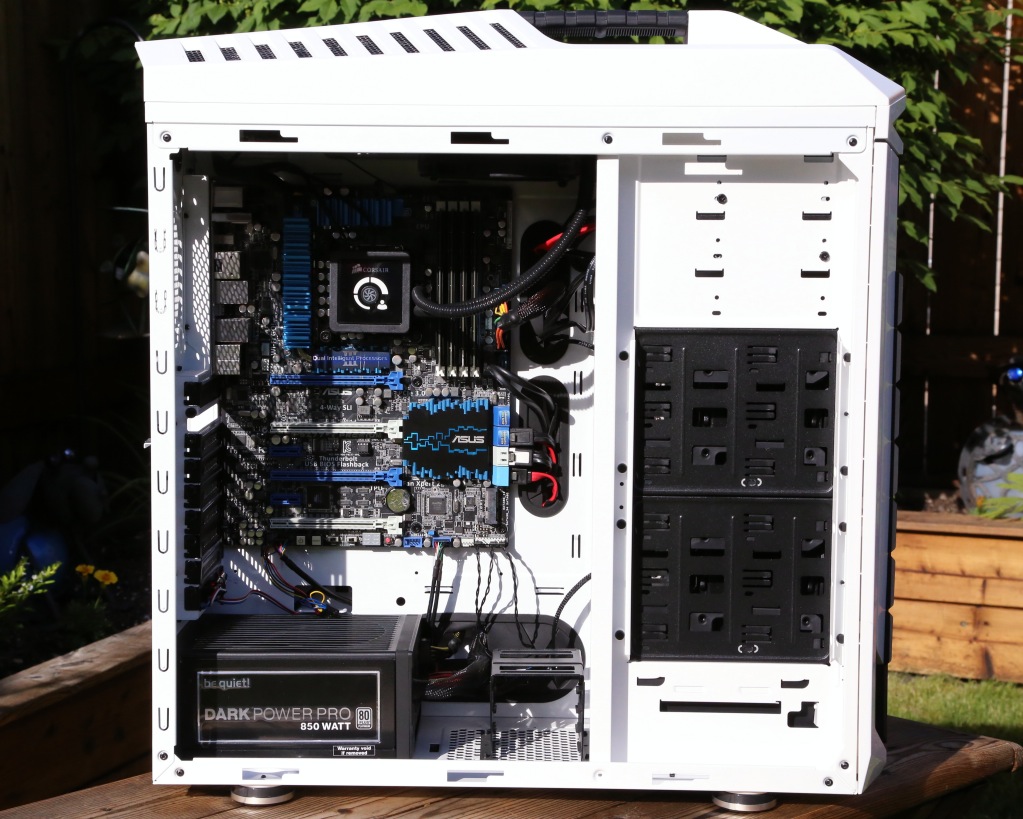THE SSD REVIEW TESTING PROTOCOL
At The SSD Review, we test our SSD’s slightly different depending upon the drive’s marketed purpose, that of a consumer or an enterprise focused SSD. For a consumer SSD, our goal is to test in a system that has been optimized with our SSD Optimization Guide, however, CPU C State alteration may or may not have occurred depending on the motherboard and BIOS configurations. Benchmarks for our consumer tests are that of fresh drives, so that we can verify that the manufacturer’s specifications match the SSD. Additionally, we also try to include links to the benchmarks used in our report so that you as the reader can replicate our tests to confirm that your SSD is top-notch.
SYSTEM COMPONENTS
This Test Bench build was the result of some great relationships and purchase; our appreciation goes to the below mentioned manufacturers for their support in our project. All of the components we use for testing and evaluation can be easily purchased at a relatively affordable price. The links provided below can assist in pricing, as well as availability for those of you who may find interest in our equipment.
| PC CHASSIS: | Cooler Master CM Strom Stryker Chassis |
| MOTHERBOARD: | ASUS P8Z77-V Premium Motherboard |
| CPU: | Intel i7 3770K CPU |
| CPU COOLER: | Corsair H100 CPU Cooler |
| POWER SUPPLY: | be quiet! Dark power Pro 850W |
| SYSTEM COOLING: | be quiet! Silent Wings 2 Chassis Fan |
| MEMORY: | Crucial Ballistix Dual Channel DDR3 Memory |
| GRAPHICS CARD: | ZOTAC GeForce GTX 680 AMP! Edition (2 GB) |
BENCHMARK SOFTWARE
The software used for today’s analysis is typical of many of our reviews and consists of ATTO Disk Benchmark, Crystal Disk Info, Crystal DiskMark, AS SSD, and PCMark Vantage. In consumer reports, we prefer to test with easily accessible software that the consumer can obtain, and in many cases, we even provide links. Our selection of software allows each to build on the last and to provide validation to results already obtained.
Crystal Disk Info is a great tool for displaying the characteristics and health of storage devices. It displays everything from temperatures, to the number of hours the device has been powered, and even to the extent of informing you of the firmware of the device.
Here we can see that the BP4e mSATA SSD features the S.M.A.R.T. attribute, which allows for us to monitor the health of the SSD over its lifespean, as well as TRIM and advanced power management (APM).
ATTO Disk Benchmark is a relatively easy-to-use benchmark tool, which happens to be the benchmark of choice for many manufacturers. ATTO uses compressible data rather than random data, which results in higher performance and thus, higher benchmark scores. In our testing, we have selected the transfer size to range from 0.5KB to 8192KB, and have set the total length of the test to be 256MB.
The first benchmark test that we put the BP4e through proves to be almost on mark. The mSATA SSD pumps out a top write speed of 505 MB/s and read speed of 545 MB/s, which is just shy of the listed speeds.
CRYSTAL DISK BENCHMARK VER. 3.0.3 x64
Crystal Disk Benchmark is visually straightforward, and is used for measuring the speeds at which your storage device reads and writes in both compressible (oFill/1Fill) and random, mostly incompressible, data. Random data is more consistent with everyday use of a computer, such as transferring videos, pictures and music. We run the benchmark twice, using oFill data first (left), and then proceeding to test with random data (right).
Our CDM testing shows us that the drive is a tad slower than originally expected, especially as we make the transition from compressible to random data transfers. Nevertheless, we are still seeing speeds in the SATA III territory that would satisfy the typical user scenario.
 The SSD Review The Worlds Dedicated SSD Education and Review Resource |
The SSD Review The Worlds Dedicated SSD Education and Review Resource | 

